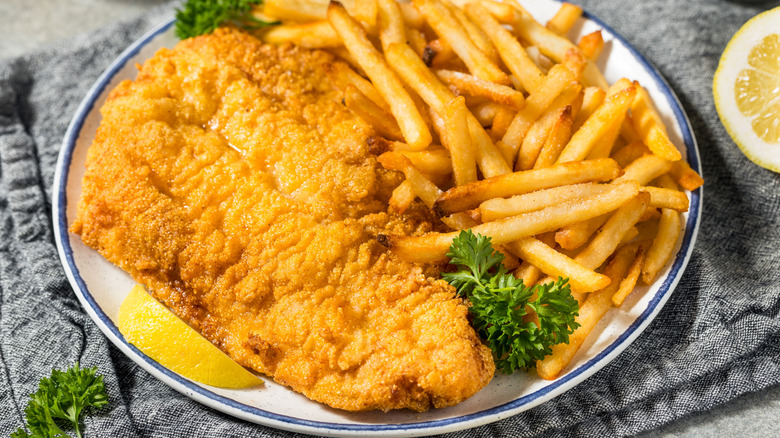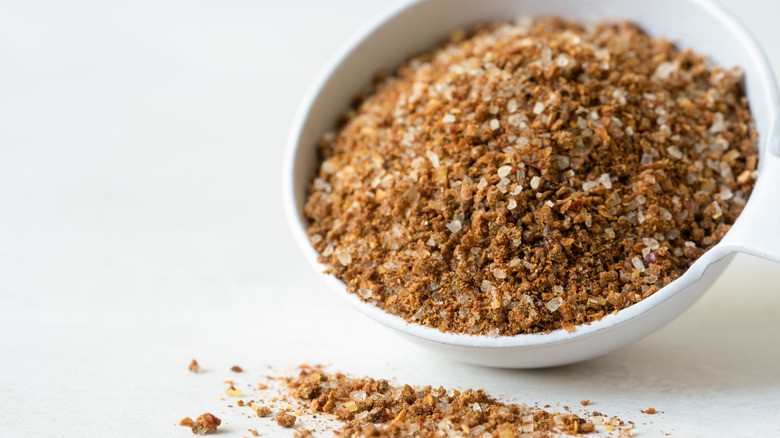The Common Mistake To Avoid When Cooking Catfish
We may receive a commission on purchases made from links.
The celebration of Juneteenth is heavy on food and, particularly, the meaningful history and culture of soul food that forms the backbone of many Black American culinary traditions. Eats that work well with the warmth of summer and celebrate the beauty of coming together as a people are especially cherished. Among these Juneteenth staples is fried catfish. Enslaved people in the American South may have found local catfish to be familiar, as the species is also commonly found in West Africa. Over following centuries of Black American culture, weekend fish fries became events that brought the community together, whether it was a church congregation or the entire neighborhood.
To prepare catfish that is worthy of such a party, there are a few snafus that you need to avoid. In our guide to the common mistakes people make when cooking fish, Rena Awada of Healthy Fitness Meals told our writer that, when it comes to catfish, dredging is the step that you absolutely need to nail.
"If you skip the coating, the fish can stick to the pan [and] lose its crispy texture," she cautions. To ensure that your catfish's texture is perfect, she says to "make sure to coat the catfish in a well-seasoned flour or cornmeal mixture to give it a crunchy, golden crust that holds up while cooking." The key to any kind of crispy fish batter is in the flour, but some Southern cooks would argue that you can't have proper catfish without cornmeal. The choice is yours, but don't skip out on the dredging!
Other tips for perfect Juneteenth catfish
Another step that you shouldn't overlook when frying catfish is soaking the filets in buttermilk. You can bathe the fish in buttermilk for as little as one hour or as long as overnight, but make sure you take the time to do it — the buttermilk ameliorates any muddiness from the taste of the fish. Catfish are bottom feeders and can acquire a dirty flavor due to the bacteria and algae they consume. A buttermilk bath helps wash unpleasant earthiness out of the flesh before breading.
The temperature at which you fry your fish counts, too. An ideal breaded catfish filet emerges from oil that is neither too cold nor too hot; 350 degrees should do the trick. A deep pan with a heavy bottom like a Dutch oven will conduct heat the best, but be sure not to overcrowd the cooking vessel, as this could lead to a soggy crust. For best results, fry up just two pieces of fish at a time, or perhaps three if they are small filets.
Most importantly, don't skimp on the seasoning. Perfect fried catfish usually involves seasoning the fish as well as the components of the dredge. Some like a coating that brings the heat with plenty of cayenne pepper, while others prefer milder spice. Either way, use a free hand with the salt, pepper, and either Cajun mix or Jollof seasoning spice. Old Bay has its fans as well and is a staple of Southern cooking.

